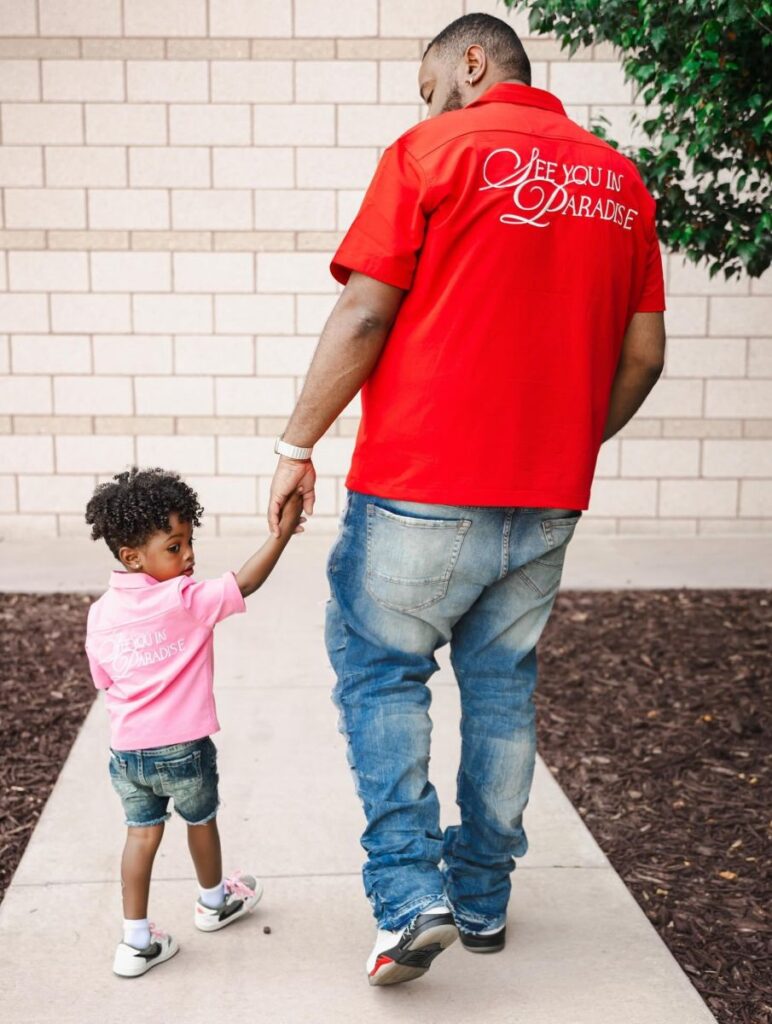Building Legacy Through Style: How Urban Fashion and Jordan Craig Empower Fathers and Their Kids
Fashion isn’t just fabric—it’s identity, culture, and connection. In today’s evolving landscape of urban streetwear, what you wear can offer a glimpse into your past, hint at your future, and reveal the people who are walking alongside you.
For many modern fathers, especially in underrepresented communities, style is more than just self-expression; it’s a way to model confidence, enhance daily life, and instill a sense of pride. And in 2025, we’re witnessing a noticeable shift: fashion is becoming a bridge between generations.
Streetwear as Legacy, Not Trend
In a world where trends can fade quickly, authenticity holds significant value. This is why brands that combine heritage with fit, like Jordan Craig, have earned the trust of men who view fashion as something deeper than mere hype.
When fathers take the time to style themselves carefully—whether it’s through perfectly stacked jeans or bold outerwear—they’re not simply dressing for today. They’re creating a visual legacy for their children to witness and, possibly, emulate in the future.
Streetwear has moved beyond its rebellious roots. It has evolved into a refined form of self-expression for men who are building businesses, leading families, and showing up for themselves. A fresh pair of denim, a structured men’s shirt, or a well-fitted bomber sends a subtle message: “I respect myself, and I appreciate respect in return.”
Fashion as Fatherhood: The Rise of the “Mini-Me” Movement
One of the most empowering sights today? Fathers walking hand-in-hand with their sons, twinning in bold color-block tees or matching denim sets. It’s a quiet yet powerful statement: “I see you. I’m with you. Let’s shine together.”
Jordan Craig’s focus on multi-generational streetwear has made this more than just a passing trend—it’s becoming a lifestyle. Their kids clothing isn’t a simplified version of the adult line; it reflects the same premium quality and fit, allowing kids to not only mirror the style but also embrace a standard.
From everyday kids jeans that hold up through school runs to summer-ready kids shorts designed for both play and polish, the fashion conversation starts early. And this is often where confidence first begins to take shape.
Confidence Is a Learned Language: Style Is the First Lesson
Research suggests that boys start forming their self-image before they even reach the age of five. How they observe their caregivers—whether it’s the neat lines of denim or the poise that comes from putting thought into one’s attire—can influence how they perceive themselves.
When a father gives attention to his appearance, it sends a meaningful message: “You’re worth investing in. So am I.”
This doesn’t mean following every trend. It means finding those reliable staples: a clean shirt, a fitted jacket, a well-maintained pair of shorts that tell your story in your own way. It’s about wearing that outfit and feeling grounded, respected, and ready to face whatever challenges may arise that day.
Community, Culture, and the Bigger Picture
This shift toward generational streetwear isn’t limited to the wardrobe. It’s unfolding in neighborhoods, at family gatherings, and across social media feeds. What might once have been dismissed as superficial is now recognized as a form of generational empowerment.
Whether it’s preparing for the first day of school, taking part in a family photo shoot, or attending church, more fathers are showing their sons that presence matters—and fashion plays an important role in that presence.
By dressing well, these men are claiming visibility, pride, and cultural leadership. They are reshaping the concept of masculinity in a positive way, without uttering a word.
A Legacy You Can Wear
Urban fashion isn’t about surface-level trends—it’s a reflection of the soul. It honors heritage, celebrates rhythm, and embodies ambition. For fathers raising the next generation of leaders, creators, and thinkers, this is significant.
Your son is observing. What you wear becomes part of what he remembers—how you moved, how you carried yourself, how you made him feel.
The good news? Creating a legacy doesn’t need to be complicated. It can begin with something as simple as a fresh tee and a matching set that conveys: “I see greatness in you, and together, we’re going to shine.”




